
* The first space probes were sent to Venus from the early 1960s, with American "Mariner" probes in competition with Soviet "Venera" probes. Although the Soviets got off to a rough start, they ultimately enjoyed considerable success, performing a number of soft landings on the planet. From the late 1970s, Venus missions became less frequent, but probes continue to be sent there.
* Venus was one of the five planets known to the ancients, and was named after the Roman goddess of love. Since its orbit is closer to the Sun than the orbit of the Earth, it is never seen late at night, disappearing under the horizon no more than three hours after sunset when it is in position to be seen as the "Evening Star", and appearing no more than three hours before sunrise when it is in position to be seen as the "Morning Star". At its brightest, Venus is the most brilliant object in the sky except for the Sun and Moon, having an apparent magnitude of -4.4 -- or 15 times brighter than Sirius, the brightest star.
The precise orbital mechanics of Venus were not understood until the development of modern astronomy, when observations led to calculations of the planet's orbit and mass. The average diameter of its orbit is 108,200,000 kilometers, 72% that of Earth's, with a small orbital eccentricity of 0.007 and an orbital inclination to the ecliptic of 3.4 degrees. Venus takes 224.70 Earth days to make one complete orbit around the Sun. The phases and positions of Venus as seen from Earth repeat on a 19-month cycle. Interestingly, Venus rarely makes passages or "transits" across the Sun as seen from Earth, with such transits occurring in pairs separated by eight years at intervals of about a century. The last transit occurred in 2012. The first transit observations were performed in 1761 and 1769 and were used to obtain an improved estimate of the distance from the Earth to the Sun through observations from widely-separated regions of the Earth, with Captain James Cook observing the 1769 transit from Tahiti.
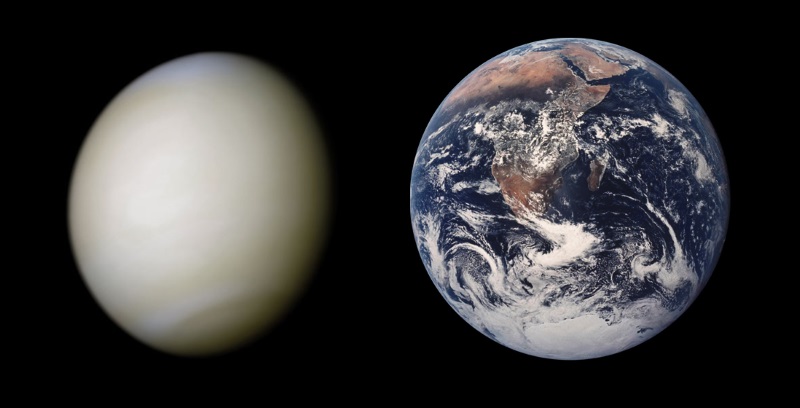
The diameter of Venus is 12,100 kilometers, about 95% that of Earth, and its mass is 81.5% that of Earth, giving it a mean density 5.24 times that of water. The fact that the Earth and Venus are of similar size has led to Venus being occasionally referred to as Earth's "sister planet". Once further details were uncovered, it would prove to be a twisted sister.
For centuries, this was about as much as was known about Venus. In the 17th century, Gian Domenico Cassini of France reported seeing faint markings on the planet, as did Sir William Herschel of England a century later. The Russian scholar Mikhail V. Lomonosov reported from his observations of the transit of 1761 that Venus had an atmosphere, revealed by a bright "ring" that appeared around the planet as it approached the visible edge of the Sun.
Venus did in fact have an atmosphere, but the markings were an illusion, even though in 1897 the American astronomer Percival Lowell produced a map of the planet showing "canals", like those he and others believed to exist on Mars. All Lowell's map illustrated was the extent of his willingness to see what he wanted to see. Nobody was able to provide any map of the planet that could be duplicated, and astronomers suspected the planet was largely or entirely covered with clouds. This accounted for its high albedo, reflectivity, of 65%; the albedo of the Earth, in contrast, is 37%. Similarly, some observers claimed every rare now and then to have spotted a moon of Venus -- but if there was ever one there, it isn't now.
The clouded nature of the planet was finally confirmed with photographs taken in the ultraviolet region of the spectrum by American astronomers William H. Wright and Frank E. Ross in 1927 and 1928. The global cloud layer suggested that Venus was a wet, warm planet, with great oceans or endless swamps, something like an ancient Earth teeming with giant reptiles and other monsters. Beginning in the late 1930s, the American adventurer and pulp writer Edgar Rice Burroughs, creator of TARZAN OF THE APES, wrote stories about "Carson of Venus" having great adventures fighting Nazi-like locals across the oceans and in the jungles of our mysterious "sister planet", known as "Amtor" to the natives.
* However, the vision of an inhabitable Venus was already fading by that time. Infrared spectroscopic observations of the planet were made by the American astronomers Walter S. Adams and Theodore Dunham in 1932 and showed that the Venusian atmosphere was mostly carbon dioxide.
The image of a "swampy" Venus persisted into the 1950s, though in 1956, microwave measurements of the planet began to hint that Venus might be more than simply "warm", with a surface temperature of hundreds of degrees Celsius. Some planetary astronomers suspected that the carbon dioxide atmosphere might trap solar radiation, building up high temperatures through what became known as the "greenhouse effect". Others came up with mechanisms that explained the microwave emission as an atmospheric effect, allowing the surface of the planet to remain relatively "cool".
Advances in radar technology led to the first radar observations of Venus from Earth in 1961, revealing that the planet had a very slow rotation that was "retrograde", in the reverse direction of the Earth and most of the other planets. Later Earth-based radar observations performed in the 1970s, mostly using the Arecibo radio telescope, provided increasing surface detail, ultimately down to a resolution of a few kilometers.
BACK_TO_TOP* Burroughs' vision of a jungle Venus finally died completely in late 1962, when the US Mariner 2 spacecraft flew by the planet.
When the "space race" between the US and the Soviet Union began in the late 1950s, NASA's Jet Propulsion Lab had come up with grand plans for a series of large, sophisticated interplanetary space probes, to be named "Mariners". However, launch of such large space probes was dependent on the development of a new and powerful booster, the Atlas-Centaur, and the development program proved explosively troublesome. JPL finally had to settle on a less sophisticated design, based on the simpler Ranger Moon probes. The stripped-down Mariner was originally named "Mariner Ranger" or just "Mariner R", and would be launched on the available Atlas Agena B booster.
The Mariner R was built around an octagonal central "bus" module, with a high-gain dish antenna that hinged down from the bottom and two solar panels that hinged to the sides. The panels spanned a little over five meters when deployed. A single-propellant hydrazine rocket engine was used for course corrections, and nitrogen gas thrusters were used for attitude control. A trusswork open frame was mounted on top of the bus module to carry the instruments, which included:
No camera was carried, since the planet's cloud cover would have made such a payload more trouble than it was worth for an initial mission. The probe was controlled by a simple digital sequencing module -- so primitive by modern standards that calling it a "computer" would seem like a grand overstatement. The entire probe weighed only a little more than 200 kilograms, unfueled.
Venus launch windows come around every 19 months, just about two months before the planet makes its closest approach to Earth, or "inferior conjunction". A Venus launch window came open in the summer of 1962, and the first Mariner R probe, "Mariner 1", was launched from Cape Canaveral before dawn on 22 July 1962, on an Atlas Agena B booster.
The spacecraft never made orbit. The booster flew off course and the range safety officer pressed the self-destruct button, resulting in an impressive display of fireworks. The problem turned out to be a bug in the software, a hazard that would become very familiar to spaceflight engineers in the following decades. Fortunately, JPL had a backup Mariner R probe, "Mariner 2", which was shot into space on 17 August 1962. Mariner 2 cruised through interplanetary space for four months, performing measurements of interplanetary magnetic fields, solar plasma and radiation, and interplanetary dust during the trip, finally arriving on target on 14 December 1962.
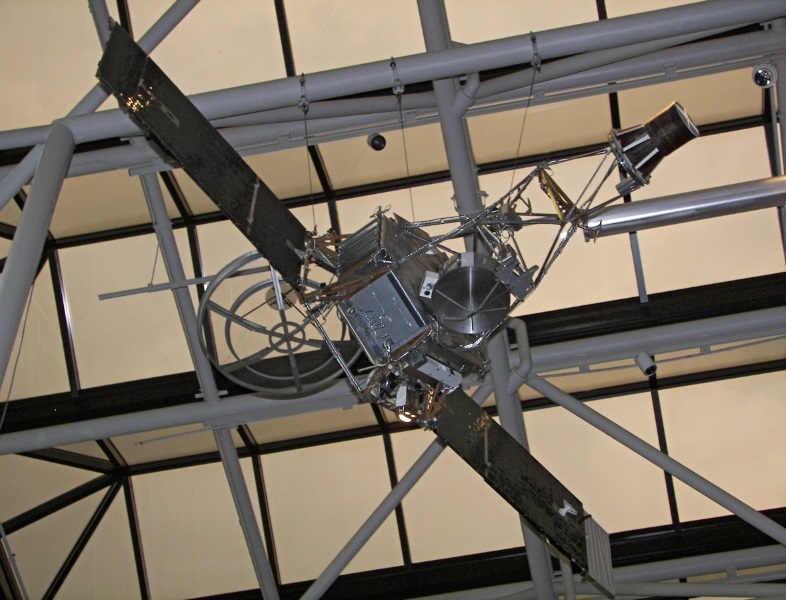
Mariner 2 flew by Venus at a closest approach of 33,810 kilometers, performing observations for 42 minutes. No magnetic field was discovered. The probe's microwave radiometer confirmed Earth observations that Venus seemed to be a very hot world, with a surface temperature of about 425 degrees Celsius, hot enough to melt lead. Had the microwave emission been from the atmosphere itself, it would have been most intense on the edges or "limbs" of the planetary disk as seen by the probe, where the path through the atmosphere was the longest, and weakest right in the center of the planetary disk, where the path was the shortest. This phenomenon is known as "limb brightening". In fact, just the opposite, "limb darkening", was observed, with the emission strongest in the center of the disk, where the atmospheric blockage of radiation from the surface was the least, and falling off towards the limbs, where the atmospheric blockage increased. Lingering visions of a prehistoric swamp jungle Venus disappeared for good.
* Mariner 2 was the first successful interplanetary probe, providing a significant boost for NASA's morale after a series of failures of other American space missions -- all the more humiliating for the US since the Soviets had been scoring success after success in space.
Another Mariner Venus probe, "Mariner 5", was launched on 14 June 1967, and performed a fly-by of Venus on 19 October 1967 at a closest approach of 4,025 kilometers. Mariner 5 was actually a backup copy of the NASA "Mariner 4" Mars probe, which had performed the first successful Mars flyby in July 1965, refurbished and modified for the Venus mission. Mariner 5 shared the hexagonal bus structure of Mariner 2, but lacked the tower assembly of Mariner 2; and also had four solar panels, arranged in an "X" pattern, instead of the two used on Mariner 2. Mars missions operated in fainter sunlight and needed more solar cells; Mariner 5 mission planners saw no reason to delete the two additional panels.
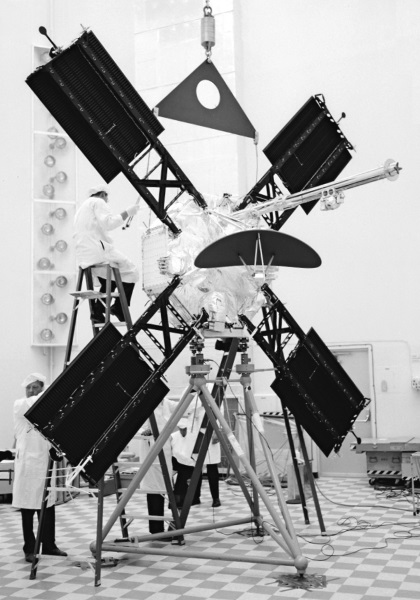
However, the TV camera scan platform included on the Mariner 4 Mars probe was not fitted to Mariner 5. The instrument suite included:
Radio science experiments were performed by tracking the motion of the probe under Venusian gravity and observing the probe's radio signal as it passed behind the planet. Total unfueled weight of Mariner 5 was about 245 kilograms. The flyby confirmed and elaborated on the observations of Mariner 2, but provided no major new revelations.
* In the meantime, the Soviets had been busy, if not very successful, in their own attempts to explore Venus. They launched two spacecraft to Venus in the launch window in early 1961, but lost both. The first was launched by Molniya booster, the standard booster for early Soviet Venus shots, on 4 February 1961. It was a "Mars 2MV" class probe, a type for which few details are available. In any case, the spacecraft never left Earth orbit. No announcement was made of the attempt, and the spacecraft was assigned the designation "Sputnik 7".
The second shot took place on 12 February 1961. This was a "Venera 1VA" class probe, of entirely different configuration from the Mars 2MV series, and was to perform an impact landing on Venus. The Venera 1VA weighed 643 kilograms, had two solar arrays, a folding parasol-type antenna on one side, and an instrument suite with particle and plasma detectors plus a magnetometer boom. It had a pressurized sphere mounted on top that would hopefully survive impact. The spacecraft achieved its proper trajectory, being designated "Venera 1", but communications were lost 15 days after launch. The probe did perform a flyby of Venus on 19 and 20 May 1961, making it the first spacecraft to perform a flyby of another planet, but it returned no data.
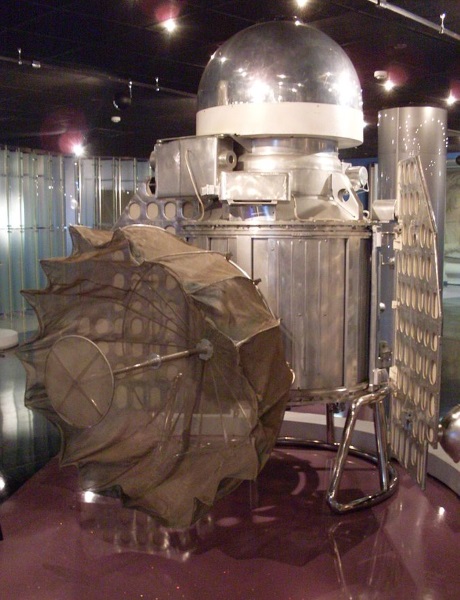
In the next launch window in 1962, when the US launched Mariner 1 and Mariner 2, the USSR launched three more Mars 2MV probes to Venus in secret. All three never left Earth orbit and no announcements were made. "Sputnik 19", as it was designated, was launched 25 August 1962, followed by "Sputnik 20" on 1 September and "Sputnik 21" on 10 September.
The first of the "Venera 3MV" probes was launched on 11 November 1963. The Venera 3MVs had the same general configuration as the Venera 1V, with twin solar panels, a parasol antenna on the side, an instrument suite with a magnetometer boom, and a crash-lander probe on top. However, they were scaled up, with a launch mass of about 890 kilograms. There was no planetary launch window open at the time, and this seems to have been a test flight. Whether by accident or design, the spacecraft never left Earth orbit, and was designated "Cosmos 21".
There were three more Soviet Venus launch attempts of Venera 3MV probes in early 1964:
The Soviets attempted to launch three more Venera 3MV probes in the fall of 1965:
After the frustrating and dismal beginning of Soviet Venus exploration, their luck improved greatly, to the point where Venus almost became a Soviet "satellite" of sorts.
* Following six years of failed Soviet Venus missions, "Venera 4" was launched on 12 June 1967. It was a "Venera 1V" spacecraft, not the same type of spacecraft as the early Venera 1VA probe -- being much like the Venera 3MV series but with improvements, including an atmospheric entry probe on top. Spacecraft weight was increased to 1,100 kilograms, with the probe launched by the uprated "Molniya M" booster, which would be the standard booster for the second series of Soviet Venus probes.
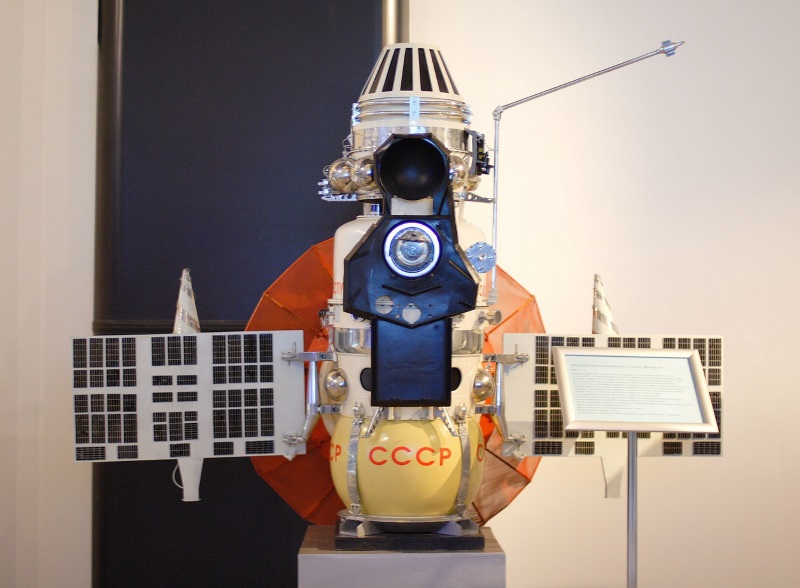
The entry probe was fitted with a parachute to allow it to descend slowly through the Venusian atmosphere, returning data from an instrument suite consisting of:
Venera 4 was successful, dropping its entry probe into the atmosphere of Venus on 18 October 1967. The probe continued transmissions until it reached an altitude of about 25 kilometers, and then contact was lost. Soviet mission scientists originally thought that they had tracked the probe to landing, but quickly discovered they were in error. Obviously, the probe wasn't rugged enough to withstand the harsh environmental conditions on the surface of Venus. However, Venera 4 was the Earth's first probe to enter another planet's atmosphere and return data.
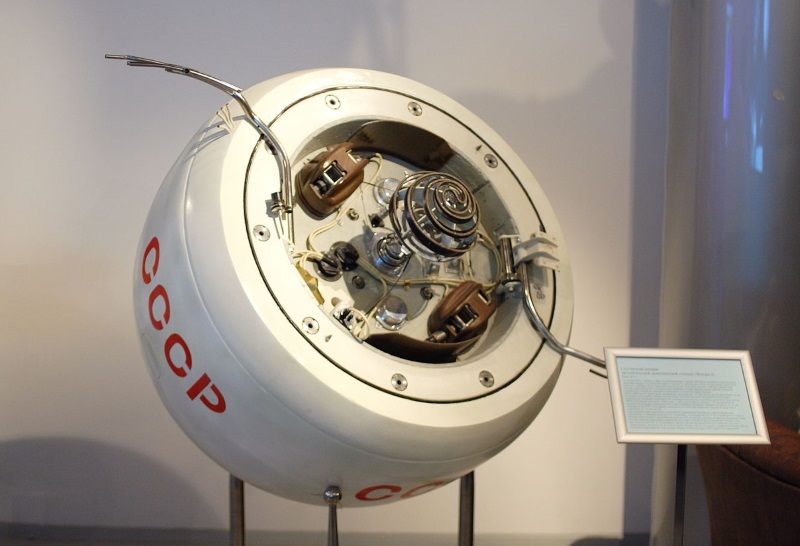
Another Venera 1V probe was launched on 17 June 1967, shortly after the launch of Venera 4, but never made it out of Earth orbit. This spacecraft was assigned the designation "Cosmos 167". Still, after so many years of heartbreaking failures, the fact that one of the probes proved highly successful was very encouraging, and certainly dropping an atmospheric probe a day before the arrival of the NASA Mariner 5 flyby probe upstaged the US.
Despite the competitive environment, Soviet and American researchers working on Venus missions freely shared data. There was no rational political or military reason to keep the data a secret, and in fact publishing the data provided a measure of publicity. Exploring other planets was new, breathtakingly exciting -- it still is -- and the two sides felt a degree of collegiality and mutual enthusiasm along with the rivalry.
The Soviets did even better with their next attempts. "Venera 5" was launched on 5 January 1969, while "Venera 6" was launched on 10 January. These were "Venera 2V" probes, much like the previous series but with various improvements, including a ruggeder atmospheric entry probe, giving a slightly greater weight of 1,128 kilograms. Venera 5 dropped its atmospheric entry capsule on 16 May 1969, and Venera 6 dropped its capsule the next day, 17 May, with both capsules returning data for most of an hour.
"Venera 7" was launched on 17 August 1970. It was a "Venera 3V" probe, similar to the Venera 2V series but with a lander probe and a still greater overall weight of 1,180 kilograms. The lander was much like the early Luna-series landers, a flattened sphere with four petals that opened up to right the spacecraft and expose sensors and antennas. Venera 7 dropped its lander probe into the Venusian atmosphere on 15 December 1970. The lander continued to broadcast for 23 minutes after landing, enduring conditions of extreme pressure and temperature. Although the lander had fallen over on touchdown and returned little useful data, this was the first soft landing of a space probe on another planet, and a justified source of pride for the Soviet space effort. A companion Venera 3V mission, designated "Cosmos 359", was launched on 22 August 1970, but never left Earth orbit.
* The Soviets continued to make progress. "Venera 8", another Venera 3V probe, was launched on 27 March 1972 and dropped its lander into the planet's atmosphere on 22 July 1972. The lander relayed data for 50 minutes from the surface of Venus, with a light meter showing that there was enough light at the planet's surface to make addition of a camera to future landers worthwhile. A companion Venera 3V mission, designated "Cosmos 482", was launched on 31 March 1972, but never left Earth orbit.
By the mid-1970s, Soviet Venus missions were hitting their stride. "Venera 9" was launched on 8 June 1975. It was a Venera 4V-1 probe, much bigger than its predecessors. It had a launch weight of about two tonnes, and consisted of an orbiter carrying a large, sophisticated lander module. It was sent into space by a heavy Proton booster, which would be used to launch all of the third and final series of the USSR's Venus probes.
The lander was released from the orbiter on 20 October 1975. Two days later, it descended to the planet's surface under three parachutes, taking up the shock of impact with a special doughnut-shape "crushable" metal landing cushion. The lander returned data, including black-and-white photographic images, for 53 minutes, relaying the information to the orbiter to pass back to Earth, which also performed observations from space with its instrument suite. The lander was supposed to return panoramic pictures, but the lens cap wasn't released from one of the two cameras. The photographs returned by the lander revealed that light levels were comparable to those on Earth on a cloudy summer day, and images of rocks showed few effects of erosion. The relatively bright surface came as something of a surprise, since after Mariner 2 there had been a widespread assumption that the unbroken cloud cover left the surface in inky darkness, relieved only by the faint reddish glow of rocks.
A sister Venera 4V-1 spacecraft, "Venera 10", was launched on 14 June 1975, and proved a near-repeat of the success of Venera 9. The Venera 10 lander touched down on 25 October 1975 and returned data for 65 minutes. It also failed to release one of its lens caps.
While the Soviets were improving their aim at Venus, the US had been ignoring the planet. The "Mariner 10" probe, discussed below, was intended to survey the planet Mercury, but after its launch on 3 November 1972 it performed a flyby of Venus on 5 February 1974, primarily to adjust its trajectory via a "gravity assist", but also using the opportunity to take a few measurements, as well as the first photographs of the planet taken by a flyby probe.
None of the other flyby probes sent to the planet before had included a camera. The images returned by Mariner 10 taken in visible light revealed little of interest, but those taken through an ultraviolet filter showed a striking and fast-changing global cloud pattern. The vivid cloud patterns were due to some atmospheric aerosol component that absorbed ultraviolet radiation. The nature of this "ultraviolet absorber" still remains a matter of speculation.
BACK_TO_TOP* NASA finally returned to Venus, launching the "Pioneer Venus" mission in 1978. This consisted of two spacecraft, the "Orbiter" and the "Multiprobe". The Orbiter was fitted with remote-sensing instruments, including an imaging radar to obtain a map of the Venusian surface, and as its name implies, it was intended to go into orbit around the planet and relay back data over a long period of time. The Multiprobe was a "bus" spacecraft that carried a large conical atmospheric entry probe, along with three similar but smaller atmospheric entry probes. All four probes and the bus were designed to fall directly into the Venusian atmosphere.
The Orbiter was launched by an Atlas-Centaur booster on 20 May 1978 and placed itself into an orbit around Venus on 4 December 1978. The orbit was highly eccentric, falling to an altitude as low as 150 kilometers above the planet's surface and then climbing back up to a peak altitude of 66,900 kilometers.
The Orbiter weighed 517 kilograms; it was in the shape of a drum 2.5 meters in diameter and 1.2 meters high, ringed with solar cells. All the instruments were mounted on top of the drum, except for a magnetometer that was mounted on a boom. The spacecraft carried an extensive suite of instruments. The most significant was a radar altimeter that could be used to construct a coarse surface map of the planet. Minimum resolution of surface features in this map was about 80 kilometers. Other instruments included:
The Orbiter also performed radio occultation and other radio science experiments. Although there were initial problems with the radar altimetry system that eventually led to restricting its operation to ten hours a day, the Pioneer Venus orbiter returned comprehensive maps of the surface of Venus, giving planetary astronomers their first view of what the planet actually looked like. The Orbiter continued in operation for 14 years, finally falling into the Venusian atmosphere and burning up on 9 October 1992.
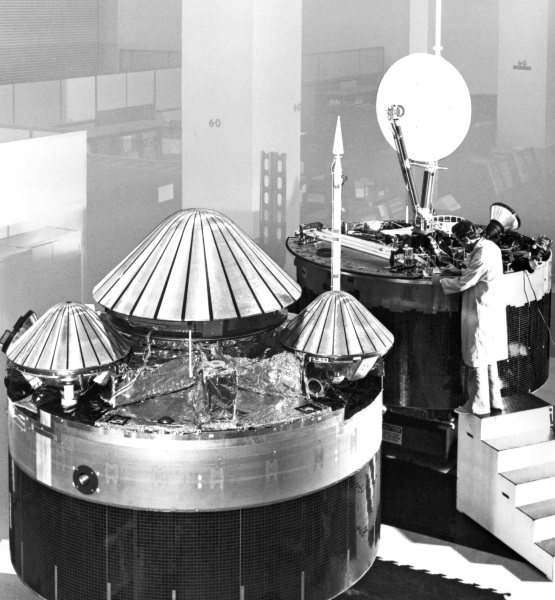
The Multiprobe was launched by an Atlas-Centaur booster on 8 August 1978, well after the Orbiter, but due to its shorter trajectory it arrived only five days later than the Orbiter, on 9 December 1978. The large entry probe, which was fitted with a parachute, had been released on 16 November, while the three small probes, which did not have parachutes, were released on 20 November. All four probes entered the atmosphere at widely separated locations, with the small probes following the large probe by about ten minutes.
The large entry probe was about 1.5 meters in diameter, weighed 315 kilograms, and carried instruments to chemically analyze the Venusian atmosphere; observe the penetration of sunlight through the atmosphere; examine cloud particles; and obtain temperature, pressure, and acceleration readings. The probe's conical "aeroshell" was released after entry into the atmosphere, with the spherical guts of the probe descending on parachute. The parachute was released at an altitude of 45 kilometers, with the spherical probe falling the rest of the way until it crashed. The parachute was released primarily because, as the probe sank, the temperature buildup would have burned it up well before it reached ground, and so dropping it ensured that results could be returned all the way to impact.
The small probes were 80 centimeters in diameter and weighed 90 kilograms each. They were named "Day", "Night", and "North", corresponding to the Venusian hemispheres that were their targets. The small probes were conical, like the large probe, but did not have parachutes, nor did they shed their aeroshells. Each carried a small instrument suite, including a radiometer to measure light and thermal emission, plus a cloud sensor and temperature, pressure, and acceleration sensors. The radio signals returned by the probes were also carefully tracked to provide data as the probes fell into the atmosphere. The "Day" probe actually survived impact, and returned data for about an hour.
The bus was, like the Orbiter, a drum surfaced with solar cells. The bus weighed about 290 kilograms and carried two mass spectrometers. However, it burned up at high altitude after its entry, about twelve hours after that of the four probes, and returned little data.
* Even as the two US Pioneer Venus probes were making their way across space, the Soviets were launching another pair of Venera 4V-1 probes, "Venera 11" and "Venera 12". With these probes, the spacecraft bus flew by Venus instead of going into orbit; all following Venera 4V-1 probes would follow this pattern.
Venera 11 was launched on 9 September 1978, with the lander touching down on Venus on 25 December 1978 and transmitting data for 95 minutes. Venera 12 was launched on 14 September 1978, with its lander touched down on 21 December, returning data for 110 minutes. However, the data from both probes was very limited, the landers apparently having sprung a leak during their descent, and neither was able to discard the lens caps on the cameras. The damage was assessed as being due to spacecraft instability during the drop into the Venusian atmosphere.
Two more Venera 4V-1 probes, "Venera 13" and "Venera 14", were launched in 1981. They featured some improvements, particularly the addition of lander stabilization fins to make sure they fell straight. Venera 13 was launched on 30 October 1981 and its lander touched down on 1 March 1982, to return data for 127 minutes. Venera 14 was launched on 4 November 1981 and touched down on 5 March 1982, returning data for 57 minutes. Both landers returned color panoramic photographs. Ironically, although the lens caps came off with no trouble this time, the cap from Venera 14 fell by chance directly under a surface-measurement probe, and blocked its operation.

Interestingly, while earlier landers used a triple-parachute system for landing, the Venera 13 and 14 landers used a single parachute that was deployed after atmospheric entry, but discarded at high altitude. The landers then descended the rest of the way using a braking ring fitted around the top like a "hat brim" to keep their descent velocity to a reasonable value. Although the scheme sounds dodgy, it clearly worked very well in the thick Venusian atmosphere. The hat brim also acted as a communications antenna.
Two Venera missions were launched in 1983, including "Venera 15" and "Venera 16". These were "Venera 4V-2" probes, based on the Venera 4V-1 spacecraft bus and designed for radar mapping of the Venusian surface. They were fitted with a radar assembly consisting of an elliptical antenna 6 meters wide for a SAR, and a one-meter dish antenna for the radio altimeter. They had no lander and were intended to operate as orbiters, not flyby craft.
Venera 15 was launched on 2 June 1983, followed by Venera 16 on 7 June. Venera 15 arrived at Venus on 10 October 1983, followed by Venera 16 on 14 October 1983. They were placed in near-polar orbits spaced four degrees apart, and performed mapping operations for eight months. Best resolution of their maps was 1 to 2 kilometers.
The last two Soviet missions to Venus were the "Vega 1" and "Vega 2" probes, which were launched in 1984 to fly by Venus and then Halley's Comet. They weighed 2.5 tonnes each and included Venus lander probes much like those of Venera 13 and 14, as well as ingenious atmospheric probes that amounted to Venusian "weather balloons".
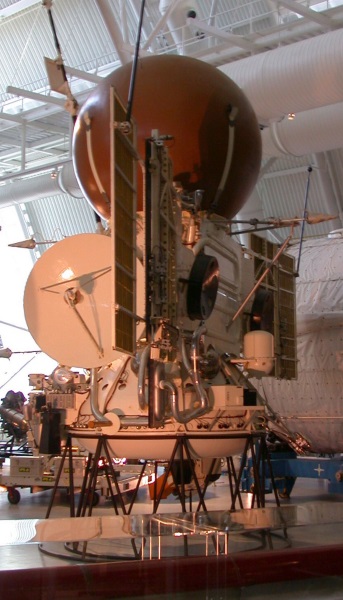
Vega 1 was launched on 15 December 1984, followed by Vega 2 on 21 December. Vega 1 dropped its lander on 11 June 1985, with Vega 2 repeating the performance on 16 June. The balloons were ejected by the landers during the descent. They were developed by the Russian space science agency IKI in cooperation with the French space agency CNES. Each balloon was 3.54 meters in diameter; carried a gondola with instruments, radio gear, and batteries; and had a total weight of about 21 kilograms. The balloons floated at an altitude of about 50 kilometers, returning data for two days until their batteries ran down. They were tracked back on Earth by an international network of radio telescopes. The data returned by the balloon probes was modest, but they provided a valuable proof of concept for the use of balloons for planetary exploration.
Vega 1 flew by Halley's Comet on 6 March 1986, followed by Vega 2 on 9 March. The two probes were a great success.
* Even before the successful Pioneer Venus mission, the Venus faction at NASA was contemplating a much more sophisticated mission to obtain a high-resolution radar map of the planet, named the "Venus Orbiting Imaging Radar (VOIR)". VOIR turned out to be too complicated and expensive, and it was canceled by the Reagan Administration in 1981.
However, the mission team was ingenious and managed to piece together a simpler spacecraft, largely built out of spares and technology leveraged from other missions, that was much cheaper but still very capable. The revised probe was authorized in 1983 as the "Venus Radar Mapper (VRM)", to be named "Magellan" in 1986. This probe, as the VRM designation implies, carried an improved SAR to allow it to make the most detailed images of the Venusian surface of any probe sent to the planet.
Magellan was launched by the NASA space shuttle ATLANTIS using an IUS booster stage on 4 May 1989, and arrived at Venus on 10 August 1990. Due to launch scheduling problems, Magellan had to take a 15-month trip to Venus instead of a typical four-month trajectory, looping completely around the Sun after leaving Earth and then catching up with Venus. Magellan performed observations of Venus for five years.
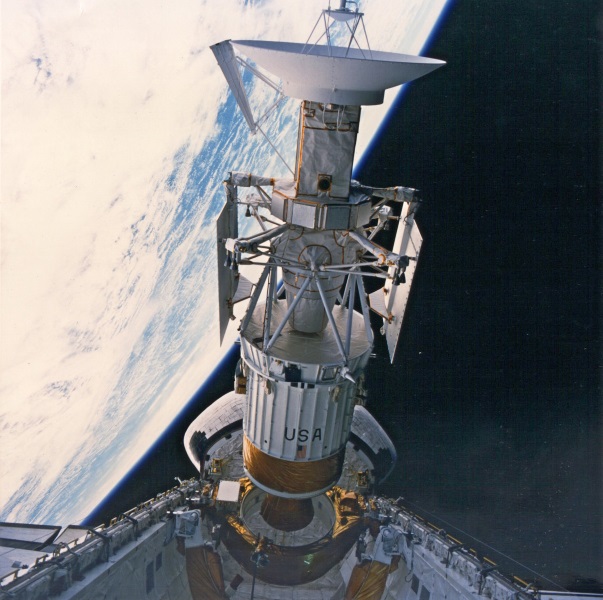
The Magellan probe weighed 1,035 kilograms. It was fitted with a 3.7-meter dish antenna, a spare from the Voyager outer-planet probes, with the antenna used alternately for communications to Earth and for SAR observations, swooping low over the planet to image a strip, or "noodle", of the surface, and then rising high to shoot the stored data back to Earth. The spacecraft was about 6.4 meters long, and with its twin solar arrays extended about 9.2 meters across. The SAR system provided mapping resolutions on the order of 1 kilometer over almost the entire Venusian globe.
Magellan's very last act was a "termination experiment" in which the probe was sent through the thin upper reaches of the Venusian atmosphere, both to investigate the structure of the atmosphere and to investigate the use of "aerobraking". This technique uses such atmosphere-skimming maneuvers to help put a space probe into its proper orbit around another planet, and is now generally used for Mars orbiters.
Incidentally, while Magellan was on its roundabout path to Venus, the "Galileo" Jupiter orbiter flew past Venus on 10 February 1990, as part of a gravity assist trajectory that would then take it past Earth twice, building up enough momentum to make the jump to Jupiter, where it arrived in 1995. While Galileo was flying past Venus, mission planners used the opportunity to make a few observations, and Galileo's infrared imaging spectrometer returned very useful data that helped provide a better picture of the planet's cloud structure.
BACK_TO_TOP* After Magellan, there was no other launch of a Venus probe to the end of the century. Venus was a low priority for planetary probe programs, partly because there have been a large number of missions to the planet that proved very successful, and partly because Venus seems less interesting than, say, Mars or the outer planets. However, on 9 November 2005, a Russian Soyuz-Fregat booster launched the ESA "Venus Express (VEX)" Venus orbiter. VEX performed its orbital injection around Venus on 11 April 2006, first entering a highly elliptical capture orbit, which was then adjusted down to an operational survey orbit.
Venus Express had a launch mass of 1,240 kilograms, and carried a suite of seven instruments, including three spectrometers; a plasma analyzer; a magnetometer; a radio-science experiment; and a wide-angle camera, which could obtain images in the near-infrared, visible, and ultraviolet ranges.
VEX performed atmospheric studies of Venus using instruments much more modern and capable than those carried by previous missions to the planet, providing a much more detailed picture of Venus's atmospheric chemistry and weather. It revealed elaborate atmospheric circulation patterns and lightning; the mission team is also looking for volcanic activity. The primary mission ended in October 2007, but the probe remained in service until 2014.
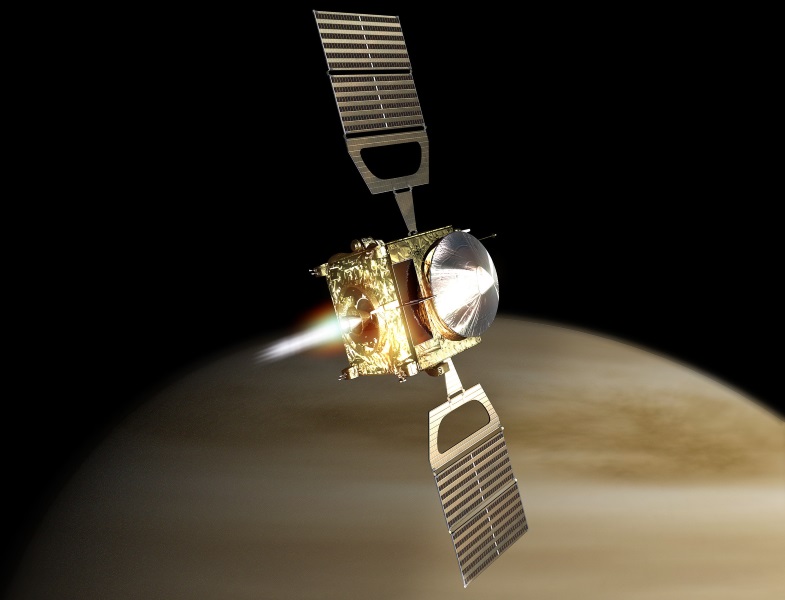
On 20 May 2010, an H-2A booster launched the first Venus mission performed by Japan's JAXA agency, with the probe originally designated "Planet-C" but later named "Akatsuki (Dawn)", apparently derived from the failed Nozomi Mars orbiter (also discussed later). It was to be placed in a highly elliptical orbit around Venus in December 2010 to perform observations, mostly focused on atmospheric studies. The probe had a launch mass of 500 kilograms, and a payload suite of six instruments:
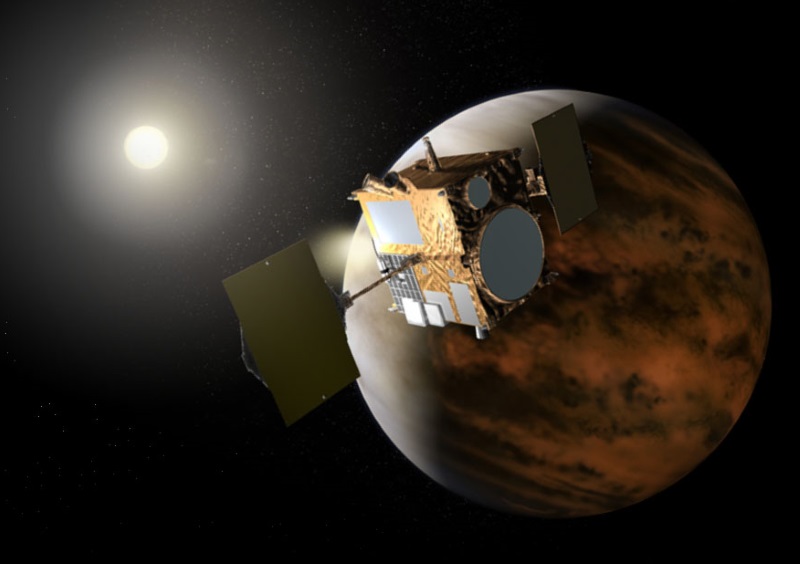
Unfortunately, due to a main engine malfunction, Akatsuki failed to inject itself into Venus orbit, sending the probe on a five-year, ten-orbit detour around the Sun. A second attempt was made in late 2015, using the probe's thruster system for orbital injection, with Akatsuki achieving orbit on 7 December. All systems were in good working order, with the spacecraft returning science data by the spring of 2016. At last notice, it was still in operation.
* The Venus that emerged after visits by a succession of American and Soviet probes was a far cry from the damp jungle world of 1950s science-fiction novels. In fact, Venus now seems more like a vision of hell itself.
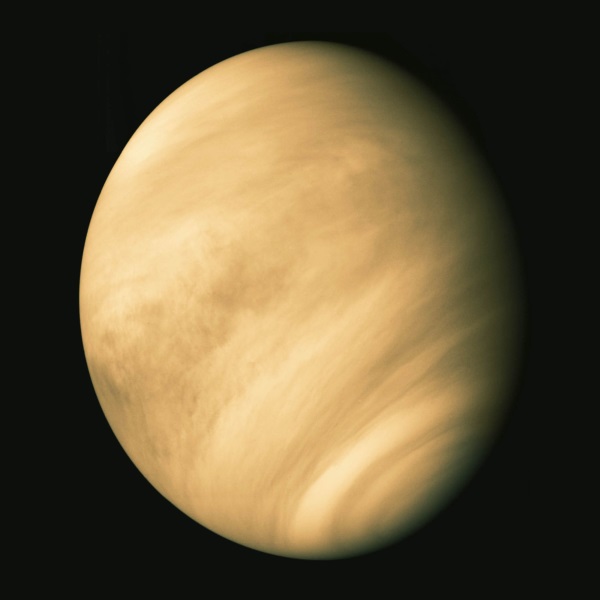
The surface temperature of Venus is very uniform, about 462 degrees Celsius, and the surface atmospheric pressure is about 93 Earth atmospheres. The atmosphere of Venus is 97% carbon dioxide, with the bulk of the remainder nitrogen. The thick CO2 atmosphere immediately accounts for the high surface temperature, since it traps solar radiation and retains it. The temperature of the planet is so high that darkness never really falls even on the night side of the planet, since the surface is glowing a dull angry red.
Sulfur compounds make up a good portion of the trace constituents of the atmosphere, and the planet's clouds seemed to be formed of droplets of concentrated sulfuric acid. However, some researchers suspect there are other constituents in lower concentrations, and indeed the Venera 12 lander detected significant concentrations of chlorine on the way down to the surface.
There is almost no water or water vapor. If all the water in the atmosphere of Venus were condensed, it might form a global puddle a few centimeters deep. The sulfuric acid in the clouds is formed by solar ultraviolet radiation at the cloud tops from sulfur dioxide, probably emitted by volcanoes, and water vapor. Planetary astronomers compare it to Earthly "acid rain", taken to an extreme.
The cloud layer extends to an altitude of 70 to 80 kilometers. Weather features can be observed in the cloud tops that indicate the presence of constant winds that circle the planet from pole to pole, with a top speed of 360 kilometers per hour. However, tracking of probes descending into the atmosphere shows that the dense lower levels are almost stagnant, with very light winds at most.
The clouds themselves are not very dense, on the average about a tenth as dense as Earthly clouds, and they do not persist all the way down to the surface of the planet. This is why the surface of the planet isn't dark. There are actually three cloud layers, separated from each other by short gaps of clear atmosphere. On the average, the cloud layers are distributed as follows:
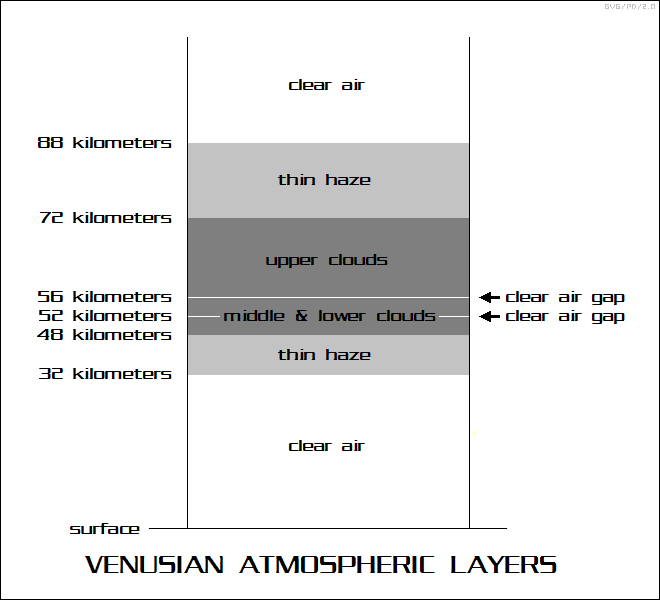
One of the biggest surprises about Venus was its rotation. Its axis of rotation is at an angle of 177.3 degrees with respect to the ecliptic, meaning that it rotates "backwards" with respect to the other planets, or in other words has a "retrograde" spin.
Planetary researchers suspect that Venus suffered a huge impact in its early days that resulted in its unusual rotation, or that the Sun's tidal influence on the planet's thick atmosphere helped flip the planet over. However, in 2001 several French researchers suggested that the tidal frictions may have simply slowed the planet's rotation down and then caused it to reverse, and that the current rotation rate is one of the handful of stable states the planet could have achieved.
The rotation period is 243.02 days, resulting in a Venusian day, relative to the Sun, of 117 Earth days. One of the oddities of this rotation rate is that Venus presents almost the same face to Earth at every inferior conjunction, 19 months apart. Actually, the face advances very slightly from conjunction to conjunction, but over a lifetime, the surface of Venus looks much the same each time, which limited the information that could be obtained by Earth-based radar scans. Planetary researchers are reluctant to conclude this is a coincidence, but can't figure out any plausible mechanism that would account for it.
* Observations performed by Earth-based radar, the Soviet radar-mapping orbiters, and Pioneer Venus showed that Venus is covered with rolling plains, interrupted by two continent-sized highland areas, named "Ishtar Terra" and "Aphrodite Terra" after two alternate names for the goddess Venus. Aphrodite Terra extends about halfway around the planet at the equator, and dominates the hemisphere that it occupies.
Magellan's improved radar system provided much more detail, revealing huge active volcanoes, widespread solidified lava flows, and large numbers of meteorite craters, ranging in size from about 160 kilometers to about 5 kilometers. Magellan's radar could in principle detect smaller craters, so it seems that the thick atmosphere of Venus tends to destroy small objects before they hit ground. Magellan did not reveal any features that suggested water erosion, confirming that the planet hasn't had any substantial bodies of water for billions of years.
The Venusian surface also seems to reveal a certain amount of tectonic plate activity, with features such as ridges; canyons; a huge depression some 1,400 kilometers long; and an enormous shield volcano with a base 700 kilometers across. In addition, Magellan found long, sinuous channels that appear to have been created by superfluid lava. Volcanic activity clearly remains in operation on Venus, but nobody is certain if tectonic activity has ceased or not.
The Soviet landers sent back photographs of their landing areas and also measured the radioactivity of rocks. The radioactivity levels of the rocks are much like that of granite and dirt, and suggests that the materials on Venus are differentiated by volcanic activity. The images show angular rocks, which also suggest that the planet has geological activities that counteract erosion.
Exactly why Venus is so different from Earth when the two planets are so similar in size and composition is a puzzle for planetary scientists. Early in the planet's history, when the Sun was about 30% less bright than it is now, the planet was very likely covered with oceans as is the Earth. However, as the Sun grew warmer, the oceans began to boil and evaporate.
On Earth, the oceans trap carbon dioxide, eventually locking it up into carbonate rocks such as limestone. With the seas on Venus turned into vapor, that could not happen, and the carbon dioxide built up heat until Venus became the hotbox that it is today. Water molecules were then eventually broken down at high altitudes by solar ultraviolet radiation and interactions with reactive molecules in the atmosphere. The hydrogen escaped into space, with the oxygen reacting with the planet's crust to be absorbed. Pioneer Venus observations indicate that this process continues today, though at a greatly reduced level.
It is surprising that water is still being lost even at a low level, since it should have completely vanished billions of years ago. It appears that water is being replenished, possibly from volcanic outgassing from the planet's interior, or by impacts of comets and other watery space junk.
* Much remains to be learned about Venus; it's a world almost as big as the Earth, and we have only probed a few very small places in detail. However, no new Venus missions are in planning.
Over the long run, we're likely to go back, and possibly send astronauts there. Crewed missions to Venus have always been a hard sell, the planet being so inhospitable that most human-spaceflight enthusiasts have been generally willing to leave its exploration to robots. However, NASA engineers have outlined a scenario for human exploration of Venus by airship, flying above the planet's clouds, the scheme being labeled the "High Altitude Venus Operational Concept (HAVOC)".
In many respects, Venus is a better target for crewed exploration than Mars. At an altitude of about 50 kilometers, Venus is a surprisingly benign environment, at least by planetary standards, almost the same gravity as Earth, effectively the same atmospheric pressure as Earth, and an average temperature of about 75 degrees Celsius. Contrast that with Mars, with a ground atmospheric pressure only about a hundredth of that of Earth, only a third the gravity, and average temperatures of -63 degrees Celsius.
It is true that the extreme temperatures of both planets would be a challenge, and their atmospheres are not breathable -- but the thicker atmosphere of Venus means that astronauts there will not be exposed to the same levels of cosmic radiation as they would be on Mars. Very significantly, while sunlight is relatively dim on Mars, it's strong on Venus, meaning solar power would be more effective. Proximity to the Sun means Venus gets 40% stronger sunlight than Earth, and 240% stronger sunlight than Mars.
It's also easier to get to Venus than Mars. A crewed mission to Venus would take a total of 440 days using existing or very near-term propulsion technology: 110 days out, a 30-day stay, and then 300 days back -- with the option to abort and begin the trip back to Earth immediately after arrival. A comparable mission to Mars would be 500 days at a very minimum, or more likely 650 to 900 days, since astronauts would have to wait for a favorable orbital alignment for the return journey. They couldn't just abort the mission and come home earlier: If anything went wrong, astronauts would have to wait around on Mars until their return window opened.
The HAVOC scheme envisions initial robot airship missions, followed by increasingly ambitious crewed missions, leading to a permanent human presence in a Venusian floating cloud city. The airships would be filled with helium and solar-powered. The robot precursor would be 31 meters long, about half the size of a Goodyear blimp; the crewed version would be 130 meters long, about twice the size of a Boeing 747. The top of the airship would be roofed with an array of solar panels, with a gondola slung underneath for instruments and, in the crewed version, a small habitat and the ascent vehicle that the astronauts would use to return to Venus orbit, then to home.
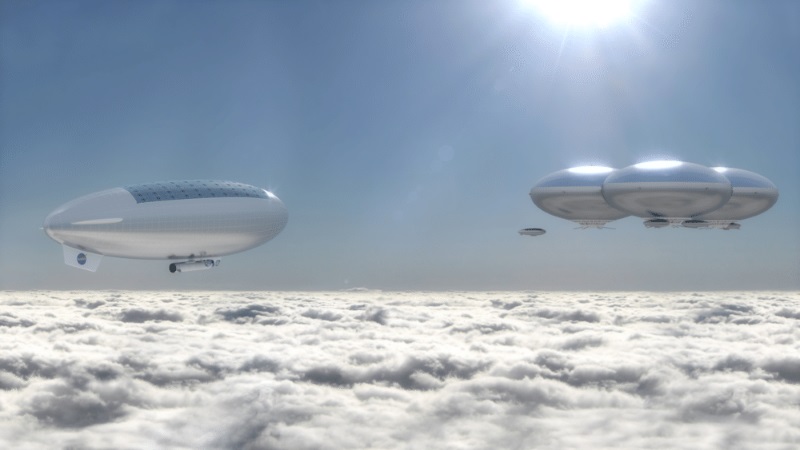
The crewed mission would involve two launches, the first of the airship, packed up inside an aeroshell, with the second launch of the crew. The crew vessel would rendezvous with the airship in Venus orbit, with the crew boarding the airship vehicle, which would then enter the atmosphere. The airship would discard the aeroshell after entry, deploy a parachute, inflate itself, and discard the parachute.
The airship would ride the high-speed Venusian winds, effectively orbiting Venus every 110 hours; the winds veer north, so during the dark period, the airship would drift north along with the winds to conserve power, then push back south during the light period. The astronauts would conduct science from a habitat, hauled underneath the airship, working with robots and static stations landed by other missions. Once the mission was completed, the astronauts would ride an ascent vehicle into Venus orbit, to hook up with the crew vessel for return to Earth.
There is precisely no chance of HAVOC taking place at present. The question of course whether there is any sense in sending humans instead of robots to Venus, but there has always been a faction in the space exploration community that believes there is no real point in planetary exploration, unless humans ultimately visit the planets themselves. If we are to send humans to another planet, there's a fair case for making Venus the first on the list.
BACK_TO_TOP